How to Survive in the Mountains
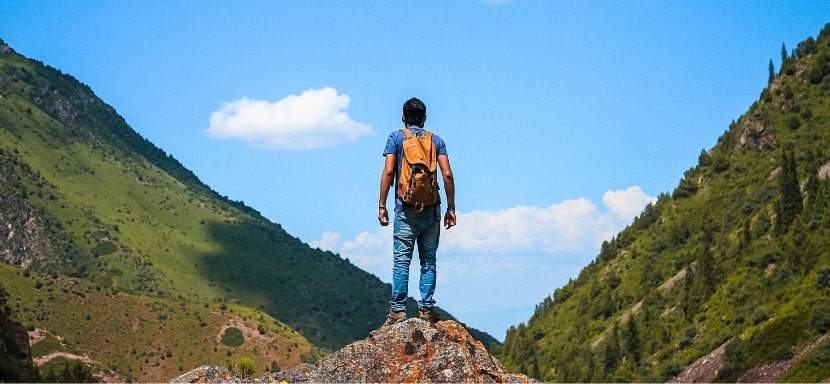
Mountain Survival Guide
Hypothermia and thin air are just a few of the risks you may encounter when attempting to survive on a mountain.
It’s all too common: Someone goes on a little hike through the forest and ends up lost because they were not paying attention or made a wrong turn on the path. Before they know it, everything looks the same, darkness falls, and they are engulfed in a cold survival situation.
Introduction to Mountain Survival
Mountains are not just geographical features but powerful symbols of nature’s untamed wilderness.
Venturing into the mountains requires more than physical fitness and determination; it demands a comprehensive understanding of the environment and the skills necessary for survival.
The key to surviving in such unpredictable terrains lies in preparedness and the ability to adapt to changing conditions.
Mountain Survival Tips and Strategies
Learn vital techniques such as shelter building, water sourcing, fire starting, and signaling for rescue to enhance your chances of survival in remote and challenging environments.
Pre-Trip Preparations
Extensive preparation is essential before setting foot on a mountain. Start by researching the specific mountain or range you plan to visit. Understand its climate, wildlife, potential hazards, and any challenges it may present.
Print out a map and draw out the route you intend to take. Be as detailed as possible and add any extra areas you may explore if you have the time. This will not only help you plan out your journey; it may help you find some interesting spots and even some problems you may run into.
Physical conditioning cannot be overstated; the better your physical state, the higher your chances of successfully dealing with the demands of mountain survival.
Write down the time you will leave and the approximate time you expect to return. Give a friend or family member a copy of your plan and tell them you will call or text them once you return.
They will know where to start looking if they don’t hear from you.
Essential gear and supplies checklist:
- Navigation tools (map, compass, GPS)
- Multi-purpose tool or knife
- First aid kit
- Shelter (tent or emergency bivouac)
- Fire-starting materials
- Water purification system
- High-energy food supplies
- Appropriate clothing (layered and weather-appropriate)
- Signaling devices (whistle, mirror)
Did You Know?
If you find yourself lost, use the handy acronym STOP!
Stop, Think, Observe & Plan
Navigational Skills
Navigating effectively can differentiate between a successful expedition and a dire survival situation. Familiarize yourself with using a map and compass.
While GPS devices and smartphone apps offer convenience, they should not replace traditional navigation skills, as technology can fail in remote areas.

Build a Shelter from the Elements
Securing shelter and warmth takes precedence in the quest for survival on a mountain. The importance of selecting a safe and suitable campsite cannot be overstated, as it forms the cornerstone of your survival strategy. Natural shelters such as caves or overhangs present themselves as ideal options, offering protection from the elements with minimal effort. However, vigilance is critical; these natural havens can also harbor potential hazards like falling rocks or the threat of flash floods, which can escalate quickly in mountainous regions.
When the landscape offers no natural shelter or when such options come with risks too significant to ignore, the ingenuity to build a shelter from available materials becomes invaluable. Branches and leaves can be fashioned into a lean-to, effective structure for insulation and elemental protection. The orientation of your shelter relative to the prevailing wind direction is crucial—constructing your lean-to opposite the wind maximizes protection, creating a barrier against the cold.
Furthermore, the ground beneath you can significantly impact your body temperature. Utilizing leaves and other natural materials to cover the ground is a barrier against the cold, damp earth, snow, or mud, providing an additional layer of insulation.
For those fortunate enough to find a cave, crevice, or other protected area, it offers a prime choice for shelter. However, ensuring that your chosen refuge does not isolate you from potential rescue is essential. A good practice is to position yourself where you can maintain visibility, making it easier for search parties or rescuers to spot you.
Start a Fire
Above all, the ability to create fire cannot be overlooked. A fire serves multiple survival purposes: it provides warmth, a means to cook food, and a method for signaling help. Being able to start a fire is paramount when it is safe. Not only does it sustain physical warmth, but it also offers psychological comfort, boosting morale in challenging survival scenarios.
Collect as much dry firewood as possible during the daylight hours so you won’t have to search for it in the dead of night. It’s better to have too much than not enough. Circle and surround the fire with rocks; they will absorb, store, and radiate heat to help keep you warm as temperatures drop.
Mastering the skill of fire-making is essential for anyone facing the challenges of mountain survival. A fire goes beyond providing warmth; it’s a versatile survival tool crucial for:
- Cooking: Preparing food to sustain energy and nourishment.
- Signaling for Help: Using smoke and light to attract rescuers.
- Psychological Comfort: Boost morale and provide security in challenging situations.
- Water Purification: Melting snow or boiling stream water for safe consumption.
How to Start a Fire
This technique is one of the oldest in the books. It involves rubbing a stick back and forth in a hole on a board. The heat from the friction ignites the fuel. The insider tip is to press down hard while spinning the stick as fast as possible.
- Find a Stick: Find a pine or fir (softwood) stick and round one end.
- Board for Fire: Make a small hole in the board about an inch or so from the edge. Cut a V-shaped notch connecting the board’s edge to the hole. With the point of the V against the hole.
- Add the Fuel: Put a dry, light tinder in the V notch.
- Elbow Grease: Place the rounded portion of the stick in the hole and spin the stick back and forth with the palms of your hands. Press down as hard as you can while spinning until the two’s friction creates heat and smoke.
- Add More Fuel: Put a dry, light tinder in the V notch.
- Blow: Once the fuel starts to smoke and the friction causes an ember to form, Blow gently on the ember until it creates a small flame. Keep adding fuel until you have a full-blown fire.
Water Sources and Purification
Water is a critical survival necessity. Mountain streams and springs can provide water, but always purify it to avoid waterborne diseases. Boiling is the most effective method, but chemical purifiers or filters can be used if you’ve brought them along.
Where you may find water sources in a mountain survival scenario:
- Mountain Streams: Look for streams flowing down the mountain, often found in valleys or along natural depressions.
- Snow and Ice: Melt snow or ice for water. Ensure it’s clean and purify it if possible.
- Rainwater: Collect rainwater using any available containers or tarps.
- Natural Springs: Springs may emerge at specific points on a mountain, providing fresh water.
- Morning Dew: Collect dew from vegetation in the early morning using a cloth or sponge.
- Rock Depressions: After rainfall, water may collect in natural depressions or hollows in rocks.
- River Headwaters: The origins of rivers, often found in mountainous areas, can be good water sources.
- Glacial Melt: Water from melting glaciers can be found at higher elevations but should be treated before consumption.
- Vegetation: Some plants can store water in their leaves or stems. Knowledge of local flora is crucial for this method.

Food: Foraging and Hunting in a Mountain Survival Situation
While securing water and shelter are paramount in survival, finding food is essential for maintaining energy and health. Here are detailed tips on foraging and hunting that can help you sustain yourself in the wilderness:
Foraging for Edible Plants:
- Educate Yourself Beforehand: Learn about the local flora of the mountain area you’re exploring. Knowing which plants are edible and which are toxic is crucial.
- Use Field Guides: Carry a lightweight, waterproof field guide to edible plants specific to your region.
- Look for Common Edible Plants: Dandelions, clovers, and wild onions are edible plants widely found in many mountain regions.
- Test Plants for Edibility: If you’re unsure about a plant, use the Universal Edibility Test to minimize the risk of poisoning.
- Avoid Plants with Warning Signs: Avoid plants with milky sap, thorns, fine hairs, or a bitter almond smell, as these can be indicators of toxicity.
Hunting and Trapping Small Animals:
- Set Simple Snares: Learn to set up snares on animal trails. These can catch small animals like rabbits and squirrels.
- Fish in Mountain Streams: If accessible, fishing can provide a valuable protein source. Improvise fishing gear with lines and hooks or make spears from branches.
- Look for Insects and Bugs: Insects like grasshoppers, ants, and larvae are rich in protein. Ensure they’re cooked to kill any parasites.
General Tips for Finding Food:
- Conserve Energy: Opt for food sources that require minimal energy to obtain. Foraging nearby or setting traps can be more energy-efficient than hunting.
- Stay Safe: Always prioritize your safety. Avoid hunting dangerous animals or venturing into risky areas for foraging.
- Use All Parts of an Animal: If you succeed in hunting or trapping, use as much of the animal as possible, including bones for broth, to maximize the nutritional value.
- Practice Sustainable Foraging: Only take what you need and leave enough for the ecosystem to remain balanced.
Remember: While finding food is essential, it should never compromise your safety or the need for clean water and secure shelter. Prioritize your energy and focus on the most efficient and safe ways to source food.
Signaling for Help in Mountain Survival Situations
Getting rescued becomes a top priority when you find yourself in a survival scenario on a mountain.
Effectively signaling for help can make all the difference between being found quickly and enduring prolonged hardship. Let’s explore how to create visible signals from the air and the ground and leverage technology to alert rescuers to your location.
Here are some expert tips and strategies to ensure your SOS messages are seen and understood:
Creating Visible Signals:
- Use Bright Colors: Brightly colored clothing or materials can stand out against the natural background. Lay out or wear these items in open areas to increase visibility.
- Make Ground Symbols: Use rocks, logs, or snow to spell out SOS or other distress signals in large letters. These are easily spotted in the air.
- Mirror Signals: A mirror or any reflective surface can catch sunlight and create flashes. Aim these flashes toward airplanes or distant search teams.
- Smoke Signals: If safe, fire and add green vegetation to produce smoke. Thick, white smoke is visible from far away, and three puffs of smoke in a row is a universally recognized distress signal.
- Flashlights and Strobes: At night, use flashlights, strobe lights, or even your phone’s flashlight in a pattern (three short, three long, three short) to signal Morse code for SOS.
Using Technology to Alert Rescuers:
- Cell Phones: Even with limited service, attempt to text emergency services or family/friends with your location and situation. Texts can sometimes go through when calls cannot.
- GPS Devices: If you have a GPS device, use its SOS feature to send a distress signal with your exact coordinates.
- Personal Locator Beacons (PLBs): PLBs can be activated to send a distress signal directly to search and rescue satellites. Always carry one if you’re heading into remote or risky terrain.
- Satellite Messengers: Similar to PLBs, satellite messengers allow two-way communication with rescuers and send out location data.
General Tips:
- Stay in Place Once You’ve Signaled: Once you’ve sent out a distress signal, stay in the area to increase your chances of being found. Moving around can make it more difficult for rescuers to locate you.
- Repeat Signals Regularly: Continuous signaling increases visibility and the likelihood of detection. If using fires or electronic signals, keep them going as long as possible.
- Use Natural Landmarks: If possible, position your signals near distinctive features such as clearings, lakes, or hilltops that are readily identifiable from above.
- Conserve Battery Life: If relying on electronic devices for signaling, conserve battery life by using them sparingly and only when rescuers are most likely to be searching (e.g., during daylight hours).
Remember, the key is to make yourself as visible and detectable as possible, both from the air and on the ground, while ensuring you remain safe once you’ve signaled for help. With the right approach, you can maximize your chances of a swift and successful rescue.
How to Purify Water
- FILTER: Remove twigs, leaves, small rocks, and insects by running water through a t-shirt, cloth, bandana, or towel. Anything that you can use as a makeshift filter.
- BOIL: Bring the water to a rolling boil for at least 10 minutes. This will kill viruses, parasites, or bacteria hiding in the water. Boiling the water will not purify everything. Heavy metals and some chemicals may remain, but the boiling technique will sterilize the water well enough to give you enough time to await rescue and get to safety.
- SURVIVAL TIP: If you don’t have a fireproof container, heat some rocks and drop them into the water for the same effect.
Advanced Mountain Survival Techniques
Navigating the unpredictable terrain of a mountain and ensuring your survival requires more than just basic knowledge; it demands advanced skills that can significantly increase your odds of enduring and thriving in harsh conditions.
Mastering the art of creating improvised tools and equipment and adopting advanced navigation and signaling methods are critical components of this expertise.
Improvised Tools and Equipment:
- Stone Tools: Rocks with sharp edges can serve as cutting tools or be shaped into more complex tools like axes or arrowheads with effort and knowledge.
- Wooden Implements: From spears for fishing to bows for hunting, wood found in your environment can be carved and shaped into various valuable tools.
- Rope and Cordage: Learn how to create cordage from plant fibers or bark, which can be invaluable for building shelters, creating traps, or climbing.
- Container Creation: Use natural materials such as large leaves or bark to create containers for holding water or cooking food over a fire.
Advanced Navigation Techniques:
- Astronavigation: Familiarize yourself with using the stars and celestial bodies to determine direction when navigating at night.
- Topographic Map Mastery: Beyond essential map reading, understand how to utilize topographic maps to identify your elevation and the terrain around you for better navigation.
- Natural Landmarks: Use natural landmarks and changes in the environment to maintain your orientation and avoid getting lost.
Advanced Signaling Methods:
- Morse Code with Flashlights or Sounds: Knowing Morse code allows you to send detailed distress signals using a flashlight or even banging on metal or wood.
- High-Contrast Signals: Create signals that stand out against the natural background. Snow, for example, can be used to contrast with dark materials or vice versa.
- Improvised Flares: While risky and requiring careful handling, creating a makeshift flare from available materials can draw attention in emergencies.
General Advanced Tips:
- Stay Calm and Resourceful: The key to employing advanced survival techniques is not just knowledge but the ability to stay calm, think creatively, and use the resources available to you innovatively.
- Continuous Learning: The wilderness is the ultimate teacher. Practice these skills regularly, and always be open to learning from your environment and experiences.
- Mental Resilience: Advanced survival tests your physical capabilities and mental fortitude. Keeping a positive mindset and a problem-solving attitude is essential.
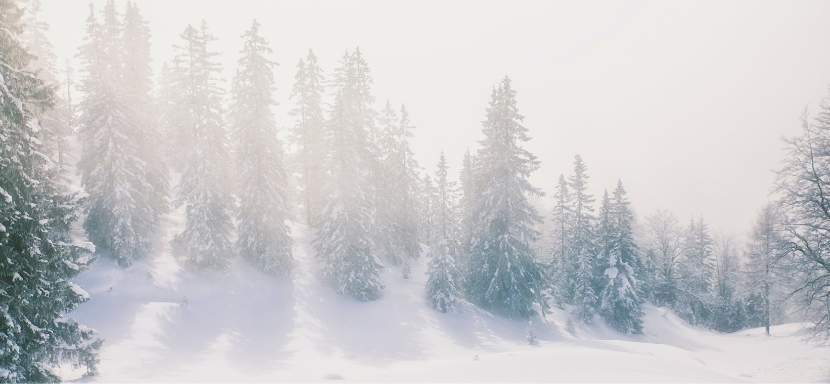
Weather and Environmental Hazards in Mountain Survival
Navigating the unpredictable conditions of mountain terrain requires an acute awareness of weather changes and a keen understanding of how to avoid natural hazards like avalanches and storms.
Here are key strategies for staying safe:
Predicting Weather Changes
- Observe Natural Indicators: Pay attention to cloud formations, wind direction, and wildlife behavior, as they can hint at incoming weather changes.
- Use Technology Wisely: Employ weather forecasting apps and tools, but do not rely solely on them. Backup knowledge of natural signs is essential.
Navigating Natural Hazards
- Avalanche Awareness: Educate yourself on recognizing potential avalanche zones and understand what triggers avalanches to minimize risk.
- Storm Safety: Know how to quickly find or create a shelter to protect against lightning, heavy snowfall, or rain during sudden mountain storms.
- Route Planning: Always consider the current weather forecast and terrain when planning your path, and be ready to adjust based on conditions.
First Aid and Dealing with Injuries
In the unpredictable and often harsh conditions of the wilderness, foundational knowledge of first aid is not just beneficial—it’s essential.
Whether trekking through dense forests, scaling rugged mountains, or exploring remote trails, effectively addressing common injuries can be a lifesaver.
Treating Common Injuries
- Cuts and Abrasions: Learn how to clean wounds properly to prevent infection. Use clean water or antiseptic wipes, apply antibiotic ointment, and cover with a sterile bandage.
- Fractures: Stabilize the affected area using splints made from available materials, such as sticks or padding. Immobilization is crucial in preventing further injury until professional medical help can be sought.
- Burns: For minor burns, cool the area with cold water or a clean, wet cloth. Cover the burn with a sterile dressing, and avoid using ice, which can cause further damage to the skin.
Altitude Sickness
- Recognizing the symptoms of altitude sickness is vital in mountain environments. Symptoms can include headache, nausea, dizziness, and shortness of breath.
- To treat mild altitude sickness, it’s essential to rest, hydrate, and, if possible, descend to a lower altitude. Acclimatization by gradually ascending over several days can help prevent altitude sickness.
Additional Considerations
- Hypothermia and Heat Exhaustion: It is crucial to recognize and treat these conditions. Hypothermia requires slowly rewarming the body, while heat exhaustion requires moving to a cooler environment and rehydration.
- Snake Bites and Wildlife Encounters: Knowledge of minimizing harm and treating bites or stings from wildlife is essential. Remain calm and immobilize the affected area, but avoid sucking out the venom or applying ice from a snake bite.
- CPR and Emergency Response: Basic CPR knowledge can be lifesaving when medical help is delayed. Familiarize yourself with the latest CPR and other emergency response techniques guidelines.
Preparation and Education: Investing time in a comprehensive first aid course designed for outdoor adventurers can dramatically increase your preparedness for dealing with injuries and health emergencies in the wilderness. Carrying a well-stocked first aid kit tailored to the specific challenges of your adventure is also critical. Beyond the basics, consider including blister care supplies, insect repellent, and sun protection to address the full spectrum of outdoor hazards.
Ultimately, the ability to administer first aid and manage injuries in the wilderness extends beyond treating immediate concerns—it’s about ensuring a safer and more confident adventure experience for everyone involved.
Leave No Trace Ethics
Adhering to the principles of “Leave No Trace” is more than an act of respect towards nature—it’s a commitment to preserving the pristine beauty and ecological balance of the wilderness for those who follow in our footsteps.
When we venture into the great outdoors, we’re visitors in a habitat that sustains a complex web of life.
By minimizing our impact on these environments, we contribute to conserving these invaluable natural resources.
Critical Principles of Leave No Trace
- Plan and Prepare: Proper planning can minimize waste and damage to natural resources. Research and follow regulations and guidelines for the area you will visit.
- Travel and Camp on Durable Surfaces: Stick to established trails and campsites to avoid damaging undergrowth and soil.
- Dispose of Waste Properly: Pack out all trash, leftover food, and litter. Use established toilet facilities or bury human waste properly away from water sources, trails, and campsites.
- Leave What You Find: Preserve the past and the natural environment. Avoid picking plants, disturbing wildlife, or taking rocks and other natural objects.
- Minimize Campfire Impacts: Use a lightweight stove for cooking and enjoy a candle lantern for light. Where fires are permitted, use established fire rings, keep fires small, and burn all wood to ash.
- Respect Wildlife: Observe wildlife from a distance. Do not follow, approach, or feed animals. Feeding wildlife damages their health alters natural behaviors, and exposes them to predators and other dangers.
- Be Considerate of Other Visitors: Respect other trail users and protect the quality of their experience. Be courteous, yield to other users on the trail, and minimize noise.
Let’s commit to being stewards of the earth, leaving no trace of our passage except for the memories we create and the footprints we leave on established paths.
Get Out Safely
The golden survival rule is always to stay where you’re at and wait for rescuers.
The theory is that if you try to venture out on your own, you could get lost further, hurt, or in a dangerous situation.
If you must go, find a body of water, such as a river. Stay close to it and follow it downstream.
This will be your best bet for finding civilization and making it out alive.
Ensuring a Safe Return from Your Adventure
Heading into the wilderness is an exhilarating experience, but ensuring you return safely is paramount. Every seasoned adventurer knows the importance of an exit strategy—a plan that enhances the enjoyment of the journey and safeguards against the unpredictable elements of nature. Let’s dive into some expert tips and strategies to help you navigate back to safety, no matter your challenges.
Develop a Solid Exit Strategy
- Inform Someone: Always let someone know your plans, including where you’re going and when you expect to return. This information can be crucial in the event of an unexpected situation.
- Know Your Limits: Understanding your physical and mental boundaries is essential. Acknowledging when you’re pushing too hard can prevent unnecessary risks.
- Weather Awareness: Monitor weather conditions and forecasts closely. Weather can change rapidly, especially in mountainous areas, so be prepared to adjust your plans accordingly.
Recognizing When to Turn Back
- Changing Conditions: If weather, health, or environmental conditions deteriorate, it’s wise to head back. No goal is worth compromising your safety.
- Time Check: Always be aware of the time, especially if you must return before nightfall. Allow plenty of time to get back safely.
- Listen to Your Instincts: Your gut feeling can often be a powerful indicator of when something isn’t right. Trust your instincts if they tell you it’s time to return.
Essential Safety Preparations
- Emergency Kit: Carry a basic survival kit with essentials like water, snacks, a first-aid kit, and an emergency shelter. Even if you plan only a short trip, being prepared is vital.
- Communication Devices: A charged phone, satellite phone, or personal locator beacon (PLB) can be an emergency lifesaver. Ensure they’re accessible and ready to use.
- Route Familiarity: In advance, familiarize yourself with the area and potential exit routes. Understanding your surroundings can make all the difference in finding your way back.
Gleaning Wisdom from Real-Life Survival Stories
Something is compelling about learning from those who’ve faced the raw, unfiltered challenges of survival and lived to tell the tale.
Real-life survival stories are not just thrilling narratives; they’re reservoirs of knowledge, offering critical lessons that can shape our approach to wilderness survival.
These stories can inform and refine our survival strategies, ensuring we’re better prepared for whatever the wilderness throws.
Extracting Lessons from Survival Stories:
- Identify Key Survival Skills: Pay attention to the skills that repeatedly play a crucial role in survival tales, such as fire-making, shelter building, and water sourcing. These are the skills you’ll want to master.
- Understand the Importance of Mental Resilience: Many survivors cite mental strength, the will to live, and the ability to stay calm under pressure as decisive factors in their survival. Cultivating a resilient mindset is as important as any physical skill.
- Learn from Mistakes: Note any errors or oversights made by survivors and consider how you would handle the situation differently. Learning from others’ mistakes can prevent you from repeating them.
- Innovative Problem-Solving: Survival stories often feature creative uses of materials or unexpected solutions to problems. Think about how you can apply similar ingenuity to your survival toolkit.
Applying Lessons to Your Survival Strategy:
- Practice Skills Regularly: Inspired by the stories you’ve read, practice essential survival skills in a controlled environment. This will build confidence and competence.
- Mental Preparedness Exercises: Engage in mental preparedness exercises like visualization and stress management techniques to strengthen your psychological resilience.
- Scenario Planning: Use survival stories to create hypothetical scenarios and plan how you would navigate those situations. This can help you think critically and prepare for various possibilities.
- Equipment Checks: Many stories highlight the importance of reliable equipment. Regularly review and test your gear to ensure it’s in good condition and you know how to use it effectively.
Conclusion: Embracing the Spirit of Mountain Survival
The journey of mountain survival is much more than a test of physical endurance and skill; it is an immersion into the heart of nature, demanding a deep reverence for its power and beauty. Surviving and thriving in the mountains requires respect, preparation, and continuous learning. It’s about forging a connection with the wilderness that is both humbling and empowering.
Cultivating Respect for Nature: Respect for nature is the foundation of mountain survival. It teaches us to tread lightly, leaving no trace of our passage, and to listen to the environment’s subtle cues. This respect ensures we preserve the natural beauty for future generations and safeguard ourselves against the unforeseen dangers that nature can present.
The Importance of Meticulous Preparation: Preparation is the thread that weaves through the fabric of survival. It encompasses everything from physical conditioning and skill development to planning and provisioning. The more thoroughly you prepare, the greater your ability to navigate the challenges the mountains may throw. It’s about anticipating needs, planning for contingencies, and being ready to adapt when the situation calls for it.
The Role of Continuous Learning and Skill Development: Survival is not a static skill set but a dynamic learning process. The mountains are great teachers, offering lessons in resilience, resourcefulness, and humility. Embracing a mindset of continuous learning—seeking out new knowledge, refining existing skills, and adapting to new challenges—is critical to mastering the art of survival. It’s about being a lifelong learner, open to the lessons the wilderness has to teach.
The Rewards of Mountain Survival: The challenges of mountain survival are matched only by the rewards. There’s a profound sense of achievement in overcoming the hurdles of the wild, a deeper appreciation for the beauty and majesty of the natural world, and a stronger connection to one’s inner strength and capabilities. The mountains offer a unique blend of solitude, beauty, and challenge that can transform how we see the world and ourselves.
In conclusion, the spirit of mountain survival is a complex interplay of respect, preparation, skill, and the relentless pursuit of knowledge. It’s a journey that tests us, teaches us, and ultimately enriches our lives in incomparable ways. By embracing these principles and dedicating ourselves to the ongoing process of learning and adaptation, we can ensure our survival, growth, and fulfillment in the majestic arena of the mountains.
Ten Incredible Mountain Survival Stories
These stories, each remarkable in their own right, not only recount the survivors’ physical and psychological trials but offer profound insights into the human spirit’s capacity to overcome seemingly insurmountable obstacles.
- “Touching the Void” by Joe Simpson: A harrowing account of Simpson and his climbing partner, Simon Yates, who faced near-death experiences while descending the Siula Grande in the Peruvian Andes.
- “Into Thin Air” by Jon Krakauer: Krakauer’s personal narrative of the 1996 Mount Everest disaster, detailing the deadly storm and the survival efforts of climbers.
- “Miracle in the Andes” by Nando Parrado: The story of the 1972 Andes plane crash survivors who endured 72 days in the mountains before Parrado and Roberto Canessa trekked to find help.
- “Alive” by Piers Paul Read: Another account of the 1972 Andes survivors, focusing on the group’s struggle to stay alive by resorting to cannibalism, among other survival tactics.
- “Annapurna” by Maurice Herzog: The first successful ascent of Annapurna, the world’s 10th highest mountain, by Herzog and his team in 1950, including their survival against severe frostbite and harsh conditions.
- “Between a Rock and a Hard Place” by Aron Ralston: Ralston’s extraordinary survival after a boulder trapped his arm in a remote canyon in Utah, leading to his desperate measure of amputating his arm to escape.
- “127 Hours” by Aron Ralston: The film adaptation of Ralston’s survival story, capturing his ordeal and the life-or-death decision he made to free himself.
- “The White Spider” by Heinrich Harrer: Harrer narrates the first successful ascent of the Eiger North Face and the numerous attempts and tragedies that preceded it.
- “No Way Down” by Graham Bowley: An account of the 2008 K2 disaster, where 11 climbers lost their lives, and the survival of those who made it back.
- “Left for Dead: My Journey Home from Everest” by Beck Weathers: The story of Weathers’ survival during the 1996 Everest disaster, despite being left for dead and suffering severe frostbite.
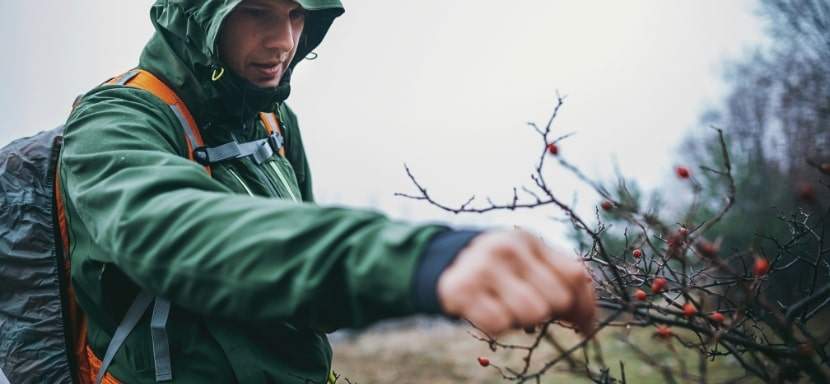
More Wild Frontier Scenarios
How to Survive a Mountain Lion Attack
Learn how to survive a mountain lion attack with practical steps to protect yourself and stay safe in. Surviving a…
How to Survive a Raccoon Attack
It’s a quiet evening, the moon is out, and maybe you’re taking out the trash or just enjoying a night…
How to Survive a Wild Boar Attack
Encountering a wild boar is like meeting your ex at a grocery store—unexpected, unnerving, and, in most…
How to Survive a Swarm of Bees
Surviving a bee swarm might sound like a scene out of a movie, but it’s a real concern for those who…
How to Survive a Skunk Spray
Getting sprayed by a skunk is a smelly situation that no one wants to find themselves in. However, if…
Recent Survival Posts
How to Survive a Layoff
Layoffs feel personal—even when they’re not. One day, you’re responding to Slack messages and forwarding…
How to Survive a Drug Test
I never imagined I’d be so emotionally invested in a paper cup. But there I was, standing under the fluorescent…
How to Survive an Interrogation
If you’ve ever been caught in the crosshairs of an overly enthusiastic mall cop or stared down by someone…
How to Survive a Nightclub Shooting
Nightclubs pulse with life—lights flashing, music pounding, bodies packed tight on the dance floor. It’s a place to…
How to Survive a Bachelor Party
A bachelor party is a delicate mix of celebration, chaos, and questionable decision-making, wrapped…
More Air, Wild Frontier Survival Scenarios

How to Survive a Raccoon Attack
It’s a quiet evening, the moon is out, and maybe you're taking out the trash or enjoying a night on your porch. And suddenly, out of the shadows, bam! There it is—those black-ringed eyes glowing at you like some creature from a raccoon version of “The Shining.” If...

How to Survive a Wild Boar Attack
Encountering a wild boar is like meeting your ex at a grocery store—unexpected, unnerving, and, in most cases, best avoided. Yet, wild boars aren't interested in your baggage or drama; they're just trying to mind their own business—unless they think you're a threat....

How to Survive a Swarm of Bees
Surviving a bee swarm might sound like a scene out of a movie, but it's a genuine concern for those who love the outdoors. Imagine this: you're hiking on a beautiful sunny day, enjoying the tranquility of nature, when suddenly you hear a low buzzing sound that...

How to Survive a Skunk Spray
Getting sprayed by a skunk is a smelly situation that no one wants to find themselves in. However, if you do end up as a target of this defensive mechanism, knowing how to handle the aftermath can make a huge difference. Let's explore some practical steps and advice...
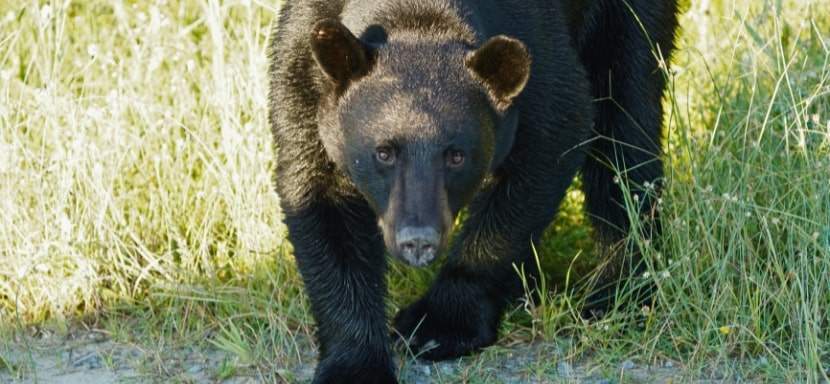
How to Survive a Bear Attack
Bear Attack Survival Tips and Strategies Though rare, bear attacks can occur because bears remember food locations for years and may silently track humans to assess threats or follow scents. Surviving a bear attack involves more than just reacting during an encounter;...
More Survival Scenarios

How to Survive a Layoff
When the Floor Falls Out: The Reality of a Layoff Layoffs feel personal—even when they're not. One day, you're responding to Slack messages and forwarding emails. Next, you're staring at your monitor as it logs you out... for good. Whether it's a restructuring, a...

How to Survive a Drug Test
The Cup, The Room, The Truth I never imagined I’d be so emotionally invested in a paper cup. But there I was, standing under the fluorescent hum of a strip-mall clinic, trying to recall the last time I ate a poppy seed bagel. That’s the thing about drug tests—they...

How to Survive an Interrogation
If you've ever been caught in the crosshairs of an overly enthusiastic mall cop or stared down by someone in a uniform with a clipboard and a glare, you’ve felt it — the chilly fingers of interrogation anxiety. And while most of us imagine interrogation scenes as...

How to Survive a Nightclub Shooting
Nightclubs pulse with life—lights flashing, music pounding, bodies packed tight on the dance floor. It’s a place to escape, feel the rhythm, and lose yourself in the crowd. But that same energy can turn deadly in seconds, transforming a night of fun into one of the...

How to Survive a Bachelor Party
A bachelor party is a delicate mix of celebration, chaos, and questionable decision-making, wrapped in the noble intention of sending the groom off into married life with a night he’ll (hopefully) remember. It’s a ritual as old as time—well, as old as men deciding...

How to Survive Your First Time at the Gym
Walking into a gym for the first time can feel like stepping into an alien world. The machines hum with purpose, the regulars move confidently, and you’re left standing there, clutching your water bottle, wondering whether you’re in the right place—or on the right...

How to Survive a Worldwide Communications Breakdown
Imagine waking up to silence. Your phone doesn’t buzz, your email won’t load, and even your local radio station crackles with static. A worldwide communications breakdown has hit. What next? For many, this doomsday scenario may sound like the opening lines of a...
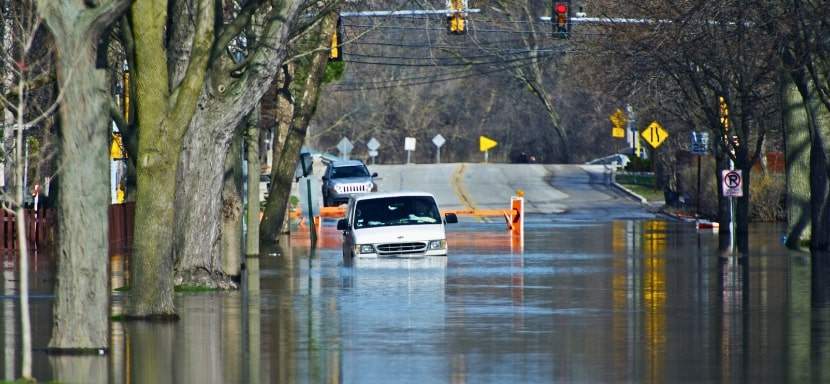
How to Survive a Flash Flood While Driving
Surviving a flash flood while driving requires quick thinking, calmness, and a solid plan to ensure your safety. Preparation can make all the difference between a close call and a catastrophe in emergencies like this. This guide provides practical advice to protect...

How to Build an Emergency Kit
Emergencies don’t knock politely at the door. They barge in, uninvited, like a distant relative with a penchant for drama, turning your world upside down without warning. Whether it’s a power outage, a natural disaster, or an unexpected evacuation, the key to staying...

How to Protect Yourself From Insects in the Wild
There’s nothing like being out in the wild—birdsong echoing through the trees, the fresh scent of earth, and a deep sense of peace that makes you think, “Ah, this is what life is about.” But then comes the buzzing. Mosquitoes, ticks, and flies swoop in like uninvited...
